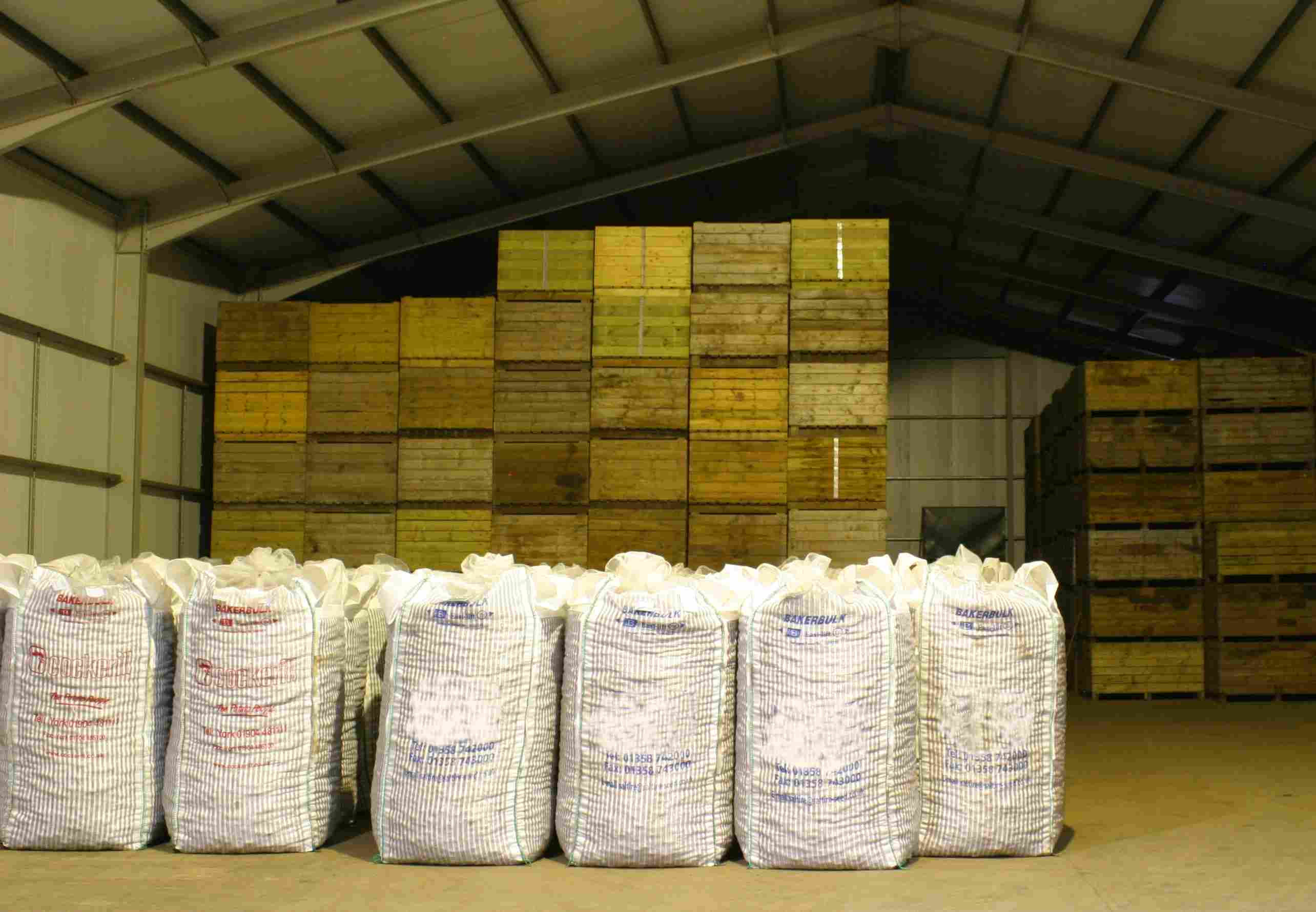Please click here to access the main AHDB website and other sectors.
- Home
- Knowledge library
- Seed handling & storage
Seed handling & storage
It is vital that seed is handled and stored appropriately after delivery and before planting, to retain maximum vigour and to ensure the best possible potato crop.
Delivery
All seed should be examined on delivery to ensure that it matches the order documents and is of the quality expected. If the seed is not up to standard, it is important that you contact your supplier immediately.
Each bag should have an official label with details matching the variety, grade and size ordered. There should also be an official seal, which should be intact on delivery.
Cleaning prior to storing
Seed must only be stored in buildings that have not been treated directly with CIPC or contaminated by leakage from a connected store.
Any ware potato handling equipment, such as graders or box fillers, must be thoroughly cleaned and if necessary disinfected before being used for seed handling.
Ensure boxes are clean and free from any possible CIPC contamination.
Managing residues from historic CIPC use
How should I store my seeds once delivered?
For traceability, ensure that the seed stocks with the same producer numbers are stored together. A minimum is that seed should remain together in the load in which it was delivered, with size grade or different stocks identified.
In order to establish best practice for the handling of any seed delivery, the first step is to determine the period between delivery and planting.
Seed should not be left in jumbo bags for extended periods of time!
Click on each of the drop down menus for further details.
Leaving the seed in bags is acceptable, but the bags must not be stacked close together. Preferably stand the bags on pallets. A 15 – 30cm gap should be left around each bag to allow air circulation. Seed bags do not make very good storage vessels, as they do not easily allow air movement. Ensure that the bags have some air circulation, either by natural breeze or by roof fan assistance.
Ideally decant seed from bags to boxes, but leaving the seed in bags is acceptable if being well-managed, with due care and attention. It is important to ensure adequate airflow around either the bags or boxes to ensure that the seed is free of condensation. Stand bags on pallets to aid circulation. The biggest concern with leaving seed in bags is poor airflow through the bag, which allows condensation to build up in the middle, out of sight.
Bags should be decanted into boxes. The seed should then be cured and ideally placed in a seed store and cooled down.
The temperature of the store depends on the period the seed is to be held at, the longer the period the lower the holding temperature (down to 3°C). If seed is to be stored for 3-5 weeks it might not be necessary to bring it down to 3°C and holding at 4-5°C might be sufficient.
Each box must have a label, which clearly identifies the variety, producer number and date of delivery. Ideally transfer the certifying label across from the bag and fix to the box.
Where a seed store is not available, construct a temporary plenum chamber from boarding or canvas for use with a portable fan. In order to minimise the risk of condensation and sprouting, the use of temporary ventilation will be necessary.
By running a fan at the appropriate time, depending on ambient temperature, condensation can be minimised. Where this method is being implemented, regular inspection of seed condition and temperature is necessary. Airflow should be modified as required, to maintain seed quality.
When taking seed out of cold store, warm it up with good ventilation to control condensation. This will reduce the risk of blackleg and a dry seed surface will ensure that powder seed treatments are applied evenly.

Example of temporary plenum chamber.

Example of poor practice – seed should not be stores in jumbo bags long term. Short term, ensure there is airspace between bags and place bags on pallets to aid air circulation and reduce condensation.
For further information on store management for seed, our Potato Seed Storage Guide is available for download.

